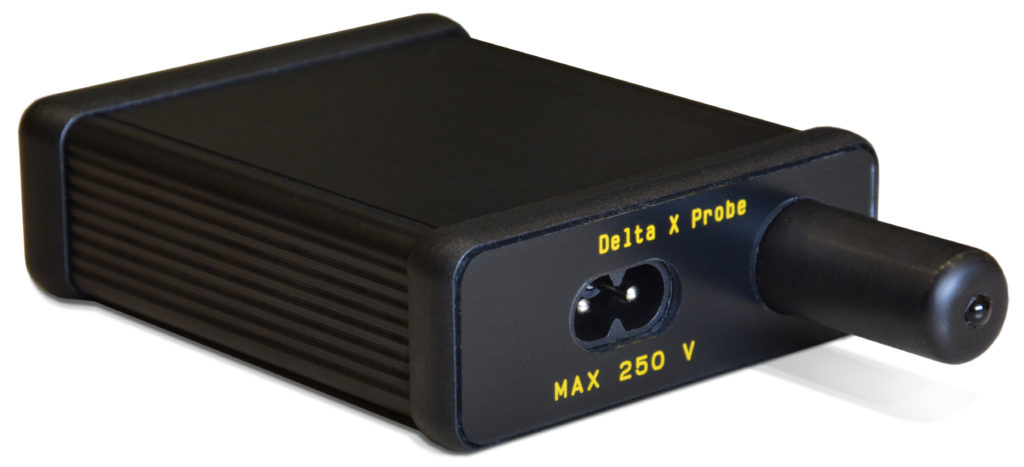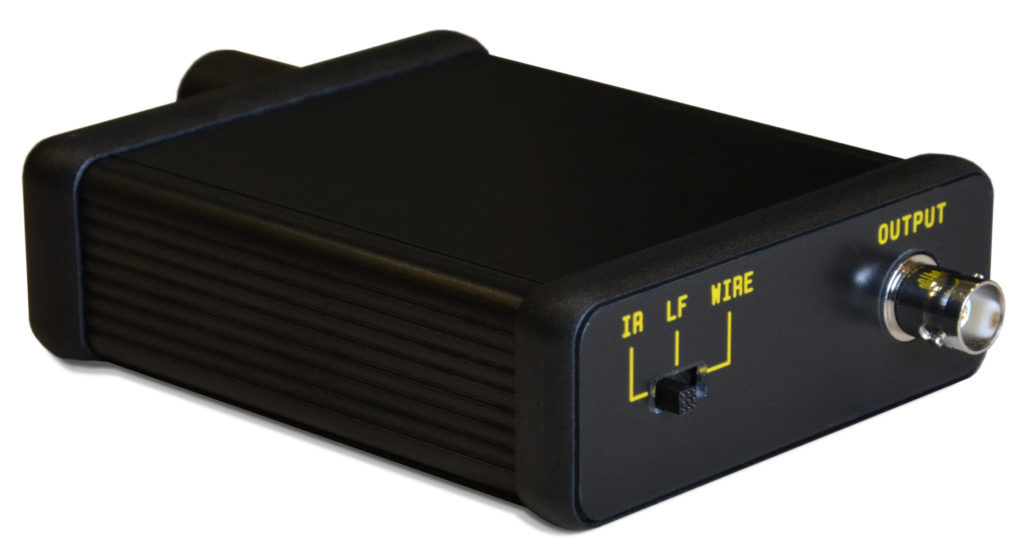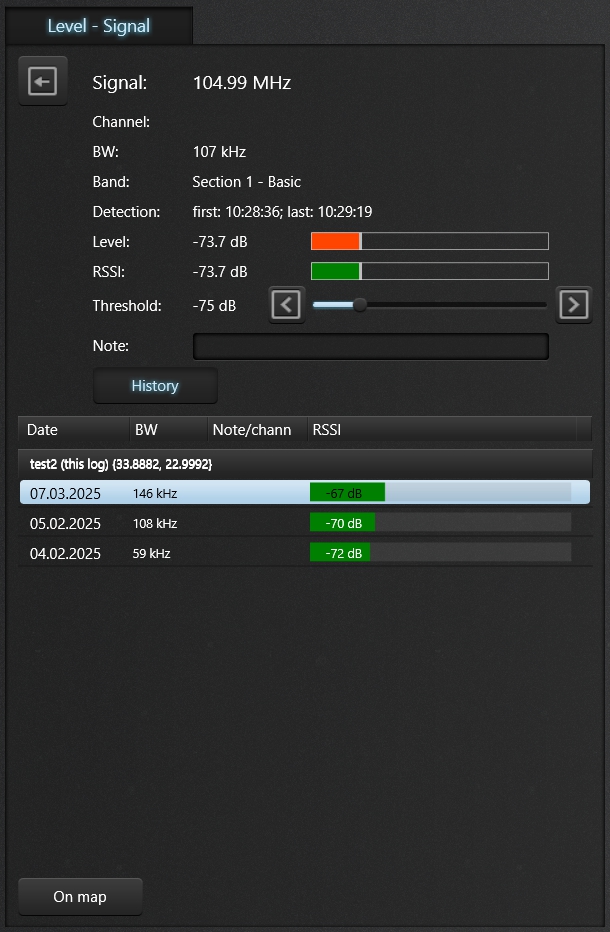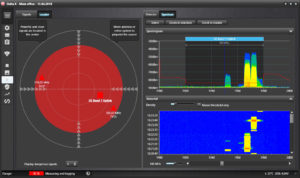Starting from the version 1.1 the Delta X is supplied with the new multi-function probe.
Front panel

Rear panel

The probe has 3 channels of detection:
- IR – detects of hidden infrared transmitters
- LF – discovers electromagnetic emissions from bugging devices
- WIRE – finds bugging devices which use wires as a mean of transmission (AC, Ethernet, landline phone, alarm system, other low-voltage cables)
Since infrared rays have a directed nature, the potential IR bug will be directed to the place of the signal’s reception. The most likely direction will be the outer area near the building or a remote part of the room. The detection should be performed inside the room and in the windows’ area, with the Multifunction Probe pointed to the interior of the room, window frames and the area near the frames.
The detection distance of the probe’s IR sensor depends on the transmitter’s power and can be 1-5 meters, on the condition of being pointed to the source.
The LF sensor of the Multifunction Probe allows the operator to find signs of hidden working electronics by detecting radio-frequency emissions.
The detection distance is up to 30 cm; therefore objects and surfaces must be probed carefully.
Since the AC wire is an antenna itself, it receives a lot of RF emissions present in modern environments. The difference method stores the RF environment measured in the first AC outlet and extracts it further than the others. When probing other outlets the operator will observe the difference. Therefore, if a bugging transmitter is present somewhere on the AC line, its signal will grow as the Multifunction Probe is moved closer to it. This difference method helps to detect signals by probing a series of AC outlets connected to the same AC wire.



